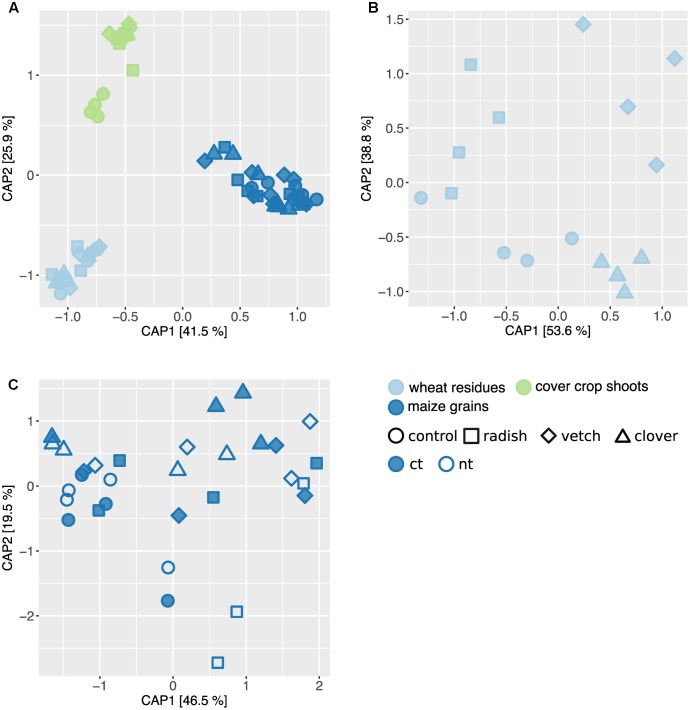FIGURE 5.
Effect of sample type and treatments on fungal community structure along a wheat-maize cropping sequence. CAP ordinations of Bray–Curtis similarities calculated based on relative OTU abundances showing major differences among fungal communities induced by sample types and different treatments. (A) The constrained factors (sample type ∗ cover crop treatment) explain 58% of variance (p = 0.001) between the fungal communities along the cropping sequence. (B) In wheat residues, the constrained factors (cover crop treatment, conditioned for block effect) explain 26% of variance (p = 0.029) between the fungal communities. (C) In maize grains, the constrained factors (cover crop and tillage treatment) explain 23% of variance (p = 0.49) between the fungal communities. Percentages indicated for each axis referring to their contribution to the constrained variation.

